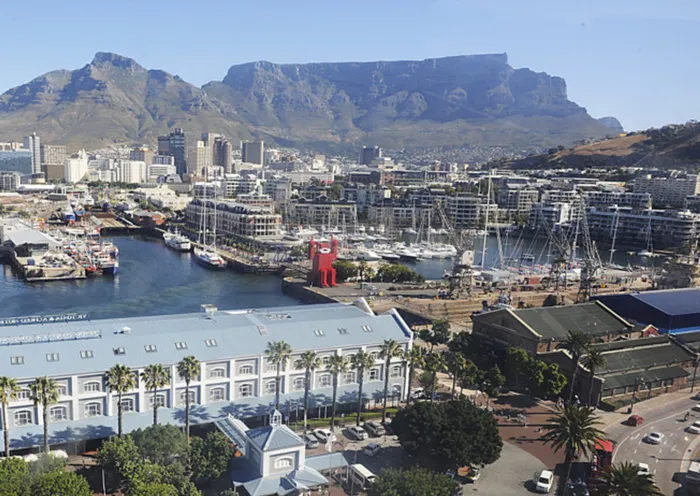‘I know I was poisoned’

Picture: Michael Walker Picture: Michael Walker
Cape Town’s V&A Waterfront has criticised patrons for making “unfounded” claims of illness after it was discovered the centre sprayed what turned out to be a deadly, outlawed pesticide around a busy restaurant.
Last week, the Saturday Star reported how the V&A allowed chlorpyrifos, which the government banned last year in non-agricultural settings, to be sprayed near the Mugg & Bean and on plant boxes, flower beds, pavements and a parking lot.
This week, more people told of how they and their families were unknowingly caught in a pesticide spray drift, and suffered headaches, nausea, muscle cramps and nose bleeds.
Chlorpyrifos, an organophosphate nerve toxin, was used as a weapon in World War II. It is the active ingredient in Pyrinex 480EC, the product the V&A used. But the V&A maintains its own investigation “suggests the claims about the effects from our use of this substance have been exaggerated”.
Jurgen Schirmacher, of the Tatib Foundation, which lobbies for safe pesticide use, said: “We’ve had lots of emails this week from Capetonians who were also caught in that spray drift. I received a phone call yesterday from a woman in Cape Town who also has become ill after eating at the Mugg & Bean at the V&A - nosebleed, nausea, headache.”
Symptoms include headaches, dizziness, nausea, vomiting, diarrhoea, shortness of breath and chest wheezing, eye pupil contraction, blurred vision, excessive salivation, convulsions, muscle spasms that may lead to muscle paralysis and death by suffocation. It is linked to autism and attention deficit hypertension disorder in children.
A Capetonian who was eating in an open-air restaurant near Mugg & Bean last Tuesday night said she had been a “washout” most of last week. “I know I was poisoned, nobody can convince me otherwise. It’s very concerning and I hope they don't just do a public relations thing on this. They must (take) responsibility. It’s serious.”
She said she became extremely thirsty on Tuesday evening on her date. “I drank a whole litre of water but nothing could quench my thirst. I started to feel strange. I had a severe headache, was constantly nauseous and couldn’t keep anything down. Not even morning sickness was like this.”
The product stays active for almost 300 days. But the V&A, acknowledging that the chemical has been stored at the V&A since 2009, “so use of it in the past is likely”, said its own investigation concluded there is no “significant evidence” to show any lasting ill-effects from short-term exposure.
“Expert opinion has advised that any effect is short-lived. The chemical is rapidly eliminated from the body and does not accumulate. Further, it was diluted substantially more than the guidelines suggest.
“We regret that these unfounded claims may have caused unnecessary concern to our patrons and are grateful that the vigilance of responsible citizens brought this matter to our attention, allowing us to institute more stringent measures (in future).”
Cape Town’s environmental health authorities and the National Department of Agriculture, Fisheries and Forestry had raised no concerns over the incident, it said. “Management would like to apologise unreservedly for this and for any undue concern this may have caused.”
The SA Pest Control Association (Sapca) termed the incident “wholly avoidable”. “It has long been Sapca’s stance that no unregistered individual should be permitted to apply pesticides in any area where there is a public health interest, which obviates DIY pest control for restaurants, guest houses, or, for that matter, tourist destinations.”
Gerhard Verdoorn of the Griffon Poison Information Centre said the law stated that if any “person, land or property owner should use the banned active ingredient chlorpyrifos, they should be penalised”.
Nathalie Harper-Leblond of Rentokil said: “Using a banned pesticide in a crowded environment is potentially disastrous.”
A new classification system dictated that pesticides must be labelled with colour bands. “Correctly trained staff would therefore have been aware that a product containing chlorpyrifos… is not appropriate for use in a crowded urban setting such as the Waterfront.”
The V&A said it had engaged an “external expert team” to neutralise any remaining chemical residues. Shirmacher responded: “How can they propose to neutralise what they sprayed? Are they going to hose down large areas of the V&A with water and allow the water to run into the harbour and sea? It specifically states on the product label that it is highly toxic to marine invertebrates.” - Saturday Star